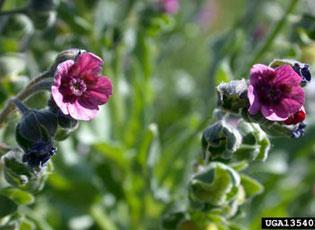Cynoglossum officinale L. (ITIS)
Houndstongue, Hounds tongue, gypsy flower, rats and mice, dog bur
Eurasia (Kedzie-Webb and Sheley 2017)
First discovered in 1893 (Kedzie-Webb and Sheley 2017)
Introduced accidentally through contaminated seed (Kedzie-Webb and Sheley 2017)
Infests pasture and rangeland, where it is toxic to livestock (Kedzie-Webb and Sheley 2017)

Houndstongue, flowers
Photo by Mary Ellen (Mel) Harte
Find more images
Distribution / Maps / Survey Status
All Resources
Selected Resources
The section below contains highly relevant resources for this species, organized by source.
Council or Task Force
Partnership
Federal Government
State and Local Government
Academic
Integrated Taxonomic Information System. Cynoglossum officinale. [Accessed Sep 16, 2023].
Kedzie-Webb, S. and R.L. Sheley. 2017. Houndstongue: Identification, Biology and Integrated Management [PDF, 1.0 MB]. Montana State University Extension. MontGuide MT199709AG.
